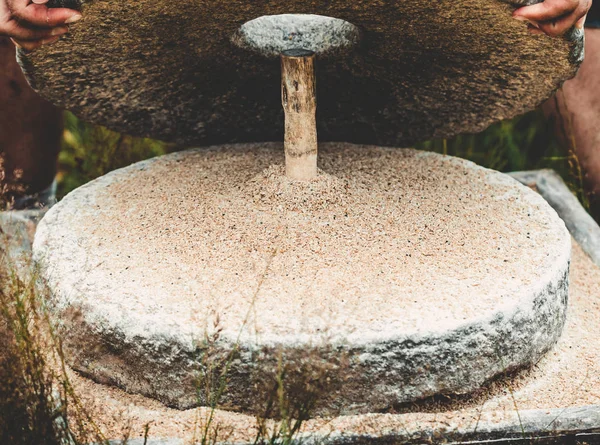
Snuff-querns consisted of an upper and lower stone, fixed together by a central iron pivot.

In the Shetlands tobacco was not smoked when first introduced, but instead was ground up into snuff, and inhaled up the nose. They were thus widely used in gold mining in antiquity. The aim was to liberate fine ore particles which could then be separated by washing for example, prior to smelting. Querns were widely used in grinding metals ores after mining extraction. The authors concluded that this was probably due to the use of these querns in the preparation of medicines, cosmetics, dyes or even in the manufacture of alloys. Moreover, one study analysing quern-stones noted that a number of querns had traces of arsenic and bismuth, unlike their source rocks, and had levels of antimony which were ten times higher than those of the rocks. Other materialsĪs well as grain, ethnographic evidence and Mesopotamian texts shows that a wide range of foodstuffs and inorganic materials were processed using stone querns or mortars, including nuts, seeds, fruit, vegetables, herbs, spices, meat, bark, pigments, temper and clay. The site is located in the heartland of the northern Chinese loess plateau near the Yellow River. A prehistoric quern dating back to 23,000 BCE was found at the Longwangchan archaeological site, in Hukou, Shaanxi in 2007. Saddle querns were known in China during the Neolithic Age but rotary stone mills did not appear until the Warring States Period. Due to their form, dimensions, and the nature of the treatment of the surfaces, they reproduce precisely the most ancient implements used for grinding cereal grain into flour. The production of flour by rubbing wheat by hand took several hours. Quern stones were used in China at least 10,000 years ago to grind wheat into flour. In early Maya civilizations the process of nixtamalization was distinctive in that hard, ripe kernels of maize (corn) were boiled in water and lime, thus producing nixtamal which was then made into unleavened dough for flat cakes by grinding with a handstone on a quern ( metate). However, in many non-Westernised, non-mechanised cultures they are still manufactured and used regularly and have only been replaced in many parts of the world in the last century or so. They were generally replaced by millstones once mechanised forms of milling appeared, particularly the water mill and the windmill, although animals were also used to operate the millstones. Quern-stones have been used by numerous civilizations throughout the world to grind materials, the most important of which was usually grain to make flour for bread-making. One class of upper quern-stones has from two to three sockets for the rod used to turn them and this is thought to reflect the need to reduce wear and tear by having alternative points of contact when in active use. Most handstones have a handle hole on the upper surface, however one class of quern-stones have a slot handle which indicates that a piece of wood was placed horizontally and protruded out from the edge so that the operator could turn the stone by standing and using a rod vertically. The upper stone sometimes had a cup shaped area around the hopper hole with a raised edge.

The upper stones were usually concave whilst the lower was convex and sometimes a rind was present as a piece of wood etc that allowed the cereal etc to be added but still acted as a centering device. An old Gaelic proverb is " The quern performs best when the grindstone has been pitted." Design of quern-stones


 0 kommentar(er)
0 kommentar(er)
